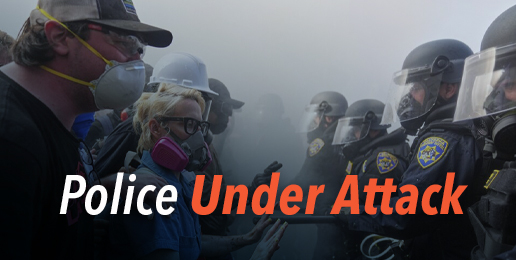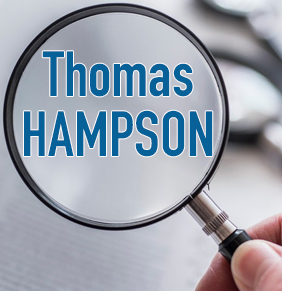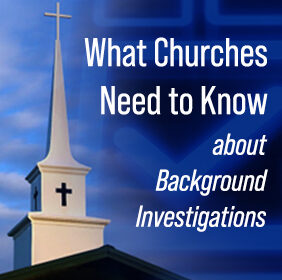
For at least the past 50 years, police have faced mounting criticism from multiple sources. Accusations range from involvement in criminal enterprises and excessive force to racial bias, lack of accountability, militarized policing, and—most recently and aggressively—harboring white supremacists within their ranks.
There is no doubt that some of these criticisms are justified. We can always find examples of each issue in some department somewhere. When I was an investigator for the state, there were departments in the Chicago area, and a few downstate, we couldn’t trust with some of our sensitive criminal intelligence because some officers, sometimes even the chief, had connections with known organized crime figures.
Even the Cook County Sheriff’s Police Intelligence Unit at the time was known to be led by a mob associate, Sergeant (later Lieutenant) James Keating. Keating was later convicted on multiple charges of racketeering, bribery, and obstruction of justice in two separate cases—Operation Safebet related to gambling, and involvement in the murder of Diane Masters.
I had multiple interactions with Keating and avoided ever giving him anything of use. The most memorable occasion was in January 1983. Keating called me and asked if we had a photograph of Alan Dorfman, the head of the Teamsters Union Pension Fund. He said he needed one for his files. I told him we didn’t have one, since his call made me suspicious.
Dorfman had just been convicted of attempting to bribe a U.S. Senator and was suspected by the Chicago Outfit of cooperating with federal investigators.
A few days after Keating’s call to me, Dorfman was gunned down by two masked men as he left the Hyatt Hotel in Lincolnshire. He was accompanied by his longtime associate, Irwin Weiner, a Chicago bail bondsman and mob associate. Weiner was unharmed. The murderers have never been caught, but it most certainly was a mob hit.
Yes, some police engage in criminal enterprises and use their positions to further those activities.
Some undeniably white supremacists also end up in police departments. As I mentioned in my last article, I spent almost two years undercover in the Ku Klux Klan. My position as a high-ranking Klan officer gave me extensive access to the names and addresses of every Klansman in Illinois, most of Indiana, and many across the country. I also had the names and addresses of members in partner organizations like the Nazis, the National States Rights Party, Posse Comitatus, and the Minutemen.
One of the things I did was publish a periodic newsletter that most of the white supremacists wanted to get. They would send me their names and addresses, which allowed me to conduct a background investigation on each of them. None came back as members of law enforcement, although a few were in positions adjacent to law enforcement, such as clerks or other civilians with administrative duties.
I found several past members who had been involved during the mid-to-late 1960s—two who had been in the Chicago Police Department and a few scattered in departments throughout the South. The most intense infiltration was in the White Knights of the Ku Klux Klan in Mississippi, members of which were responsible for the murder of James Chaney, Michael Schwerner, and Andrew Goodman in 1964. Several of the White Knights were active-duty law enforcement. But by the mid-70s, I found none. By then, the White Knights had disbanded.
The real question is whether these issues—corruption, racism, white supremacist ideology—are problems that are widespread and systemic among police departments across the nation.
They are not. Nor is there any credible evidence to support such claims.
Despite the lack of evidence, the assertions that there is widespread police corruption and malfeasance persist. Over the last few years, the most frequent claim has been racism and white supremacist infiltration, or at least sympathy, within police departments. During 2020, the claim was trumpeted so loudly and so widely that many cities cut funding to police departments, and there have been widespread efforts to eliminate qualified immunity for police, which at least four states have done.
Accusations of racism are often fueled by recurring incidents of allegedly excessive or deadly force that seem disproportionately directed at minorities, mainly Black, Hispanic, and Indigenous civilians. Studies, videos, and DOJ investigations frequently highlight apparent racial disparities in stops, arrests, and police use of violence, even in cases where the circumstances of the encounters are similar.
High-profile cases over the years, like those of Rodney King, Michael Brown, and George Floyd, among others, have been used to shape public opinion that police treat minorities more harshly. The publicity has, on many occasions, led to widespread violent protests and calls for accountability.
The hostility toward police has often been fueled by partisan attacks from politicians and sitting government officials. For example, recent attacks on ICE officers involved in locating, arresting, and deporting illegal aliens highlight this issue. Despite cartels offering bounties ranging from $2,000 to $50,000 on the heads of ICE agents and officials, both the mayor of Chicago and the Governor of Illinois have labeled ICE enforcement efforts as racist and fascist. These exaggerated attacks by officials in high office significantly influence the official stance of government agencies and shape public perceptions of the police as a whole.
Allegations that police harbor or sympathize with white supremacists—fascists—are based on anecdotal cases where officers have been identified as part of or connected to extremist groups—including white nationalist, anti-government, or militia organizations. FBI and DHS reports, including a 2006 FBI assessment, warned that white supremacist infiltration of law enforcement remains an ongoing threat to civil rights and constitutional policing.
Additional concerns arise from leaked online forums, police social media posts, or group chat revelations showing officers supporting racist jokes, conspiracy theories, or far-right protest violence. Critics argue that departmental cultures—sometimes resistant to reform—can allow such views to spread. There are frequent accusations that police leadership fails to investigate, discipline, or remove problematic officers, thereby fostering an environment where bias or even explicit discrimination is tolerated.
These patterns and exposures collectively reinforce the widespread belief and political argument that some police departments, whether intentionally or negligently, have harbored racism and white supremacist sympathies, eroding trust in law enforcement, especially among communities of color.
These interpretations are based on years of developing a biased view of police in general. However, this is more narrative than fact.
Roland Fryer’s 2016 study, “An Empirical Analysis of Racial Differences in Police Use of Force,” is one of the most comprehensive quantitative studies of racial disparities in policing ever done. Fryer, a Harvard economist, and his team collected and examined large amounts of data—covering everything from New York City’s stop-and-frisk program to detailed records of police-civilian interactions and officer-involved shootings in several U.S. cities.
The study found that Black and Hispanic civilians experienced about 50% more non-lethal force in police encounters than whites, even after accounting for circumstances and civilian behavior. This included everything from being pushed against a wall to being handcuffed, pepper-sprayed, or forcibly struck during encounters.
When it came to the use of deadly force, Fryer’s findings were controversial and widely debated. Analyzing over 1,000 officer-involved shooting incidents, the study found no statistically significant racial differences in the likelihood of police shooting Black or Hispanic suspects compared to whites, after controlling for relevant factors.
This result made headlines and faced criticism for challenging common beliefs about racial bias in police shootings. However, Fryer himself emphasized that the apparent disparities in non-lethal force still indicated a significant and troubling inequality.
One of the most notable and potentially overlooked findings in Fryer’s study was that racial disparities in use of force—whether lethal or non-lethal—were unrelated to the race of the officers involved.
Black, Hispanic, and white officers all exhibited similar patterns of harsher treatment toward minority civilians. This suggests that the problem isn’t rooted in individual racism among officers but in other factors. Since police supervisors and even chiefs are often minorities themselves, and policymakers, blaming systemic racism for these disparities is, on its face, unreasonable.
Alternative explanations for these differences include different threat and risk assessments based on location; police responses that put officers into more conflict-prone situations, mainly in minority neighborhoods; and statistical methods indicating a need for a more substantial police presence in those communities. It is also possible that populations in high-crime areas are less cooperative or more hostile toward police.
Fryer’s research extends the discussion beyond accusations of mere racism and explores more profound questions about the systems and expectations shaping police-civilian encounters in America.
And that’s as it should be.
The main factor in police corruption, like corruption in any field, is character. There are also two other key factors—transparency and accountability. When you give people power, it can be misused. The more power they have, the higher the chance of abuse. Having strong character, along with more transparency and accountability, makes corruption less likely.
The power available to law enforcement officials mainly comes from their ability to exercise discretion, decide whether to take action or not, and provide valuable inside information. However, within the law enforcement system, police have the least discretion of all law enforcement agencies. Greater power resides with elected officials who oversee the police, as well as with prosecuting attorneys and judges. Not only do these groups hold significantly more power, but they also have much less accountability.
Just think about how our immigration laws were completely ignored during the Biden Administration, how shoplifting became rampant in San Francisco when prosecutors refused to prosecute cases, and how even violent crimes are often overlooked. Consider how blatant favoritism often influences decisions. Recall the Jussie Smollett case, where State’s Attorney Kim Foxx made a sweetheart deal—not based on evidence or a desire for justice. This is the same George Soros-supported prosecutor who refused to prosecute multiple gang members involved in a gun battle in the parking lot across from the Cook County Criminal Courts building and Cook County Jail, citing it as “mutual combat.” Whatever that means.
Has anyone been held accountable for these gross abuses of power?
Discretion was initially justified as a safeguard for justice. This practical tool enables officials to adapt the law to unique situations, avoid blatant injustices, and focus enforcement where it’s needed most. When used well, discretion encourages mercy and wisdom amid unpredictable complexity, helping officials soften the law’s rigidity and preventing government from becoming indifferent or harsh.
However, in recent decades, especially in the last few years, discretion has often lost connection to its moral foundations. Instead of functioning as a tool for justice, it is increasingly used to promote political, ideological, or personal goals—whether by progressive prosecutors choosing not to prosecute entire categories of offenses to appease their base, or by agencies selectively applying enforcement powers as a means for shaping narratives, retaliating, or signaling virtue. This is evident in cases like the Breonna Taylor decision, where charges were shaped as much by political posturing as by facts.
The consequences are significant. When discretion is applied in unintended ways, unequal protection under the law becomes not just a possibility but a reality. Citizens begin to view law enforcement and prosecution as dependent on politics, geography, identity, or other factors, rather than on principles or evidence. Confidence in public institutions diminishes as laws lose their ability to deter—if laws are only enforced selectively, then they are not truly binding. Over time, agencies risk straying from their intended purpose, becoming tools of ideology instead of guardians of the public trust. Observing these changes, the public becomes cynical and disengaged, as they perceive justice as being dependent on power rather than on principles.
Perverting justice for political or ideological reasons is clearly a more significant issue at higher levels of law enforcement than among rank-and-file officers. Even more concerning is the abuse involving bribery of officials within the system. There are certainly police officers who succumb to this kind of corruption. It’s not an uncommon problem.
For example, the FBI recently arrested 20 current and former law enforcement officers on drug trafficking charges. Additionally, the Illinois State Police secured indictments against four current or former members of the Compton Hills Police Department, including the former Chief, for illegally selling firearms held as evidence, falsifying records, and obstructing investigations.
Again, because of their more limited discretionary power, the impact is not as significant as when higher-level government officials and judges become corrupt. Due to greater visibility, increased accountability, and much less discretionary power, it is harder to hide police corruption.
Corruption among high-ranking law enforcement officials has also persisted for a long time. For example, nearly 50 years ago, while working for the State of Illinois, I investigated a curious case involving the solicitation of child pornography by John M. Sundell.
The Sundell case provides a clear example of how discretionary powers can seriously weaken our system of law enforcement. On May 8, 1978, Sundell was arrested by Chicago Police during a youth division undercover operation after he allegedly solicited a minor under 16 to participate in child pornography. In this operation, a teenage girl was accompanied by an undercover female officer to Sundell’s apartment, where he offered payment to engage in sexual activity in front of cameras. When the illicit offer was made, the undercover officer signaled to officers outside, resulting in Sundell’s arrest.
The subsequent legal proceedings were highly irregular. Sundell’s defense attorney, Dean Wolfson, negotiated with Assistant State’s Attorney James Klein for a plea agreement that—while resulting in a guilty verdict and an 18-month probationary sentence—included an extraordinary stipulation: if Sundell completed probation, the prosecution would not oppose a future motion to vacate the judgment of guilt. This effectively gave Sundell a way to erase the felony conviction, a result that the presiding Judge John F. Reynolds described as “very, very, very, very unusual.” Reynolds openly acknowledged that such an arrangement allowed a de facto sentence of supervision for a felony—something that the law otherwise strictly prohibited.
Once Sundell completed probation, Judge Reynolds, in fact, vacated the conviction on December 17, 1979. This decision allowed Sundell to legally claim he had “not been convicted of a crime,” and to have his record expunged. This removed public records of both arrest and conviction, resulting in a situation where there would be “no way of knowing anything of his prior criminal history.” Even the prosecutor in the case admitted to never having seen such an arrangement elsewhere.
The case raises serious concerns. It shows how discretionary plea bargaining and creative sentencing can bypass legislative intent, reduce transparency for law enforcement, and weaken systems meant to monitor and prevent repeat or predatory behavior, including in felony cases involving minors and sexual exploitation. The police had no involvement in this arrangement. For them, it was an open-and-shut case.
We knew it was a corrupt arrangement as soon as we became aware of it. However, we were unable to prove corruption since all parties adhered to their absurd explanations.
Fast forward seven years to 1985, and Dean Wolfson was convicted in the FBI’s Operation Greylord for bribery, mail fraud, and racketeering for paying off judges to fix cases. He funneled payments through clerks and other attorneys to secure favorable outcomes. The following year, Judge John F. Reynolds was convicted of mail fraud, racketeering, and income tax fraud for accepting bribes to fix cases and steer clients to corrupt attorneys. Assistant State’s Attorney Klein was never caught up in Operation Greylord and went on to become a judge himself.
The Sundell case was not part of the Greylord investigation. Still, the pattern of corruption was evident—an open-and-shut criminal case involving the attempted sexual exploitation of a child. There were no issues with the evidence or witnesses. Wolfson and Reynolds, through their conviction, demonstrated their ease with corruption, and they could not have succeeded without the approval, or at least the tacit acceptance, of ASA Klein. We know this because the arrangement required the ASA to approve the plea. Clearly, a decision that was bought and paid for.
This type of corruption, disguised as discretion, happens often and usually stays hidden. Police corruption is discovered much more frequently, even though it is less harmful to the system. It’s harder to hide because police discretion is less extensive.
Although Greylord resulted in 92 indictments—including 17 judges, 48 lawyers, and several other law enforcement officials—it was a highly complex and challenging investigation. Additionally, the reactions of other judges, lawyers, politicians, and high-level government officials who were not charged (and are presumed innocent) could only be described as venomous.
It’s unlikely, and probably impossible, that an investigation like Greylord will ever be repeated.
In the 1980s, Greylord succeeded by leveraging unprecedented cooperation between federal and local agencies, extensive undercover operations—including agents disguising themselves as corrupt lawyers and placing listening devices in judges’ chambers—and a level of trust between agencies that enabled creative law enforcement tactics. Today, several significant barriers would prevent such an operation from being feasible.
Legal restrictions on undercover tactics have been established. Listening devices in judicial chambers that compromised Greylord would likely face significant constitutional challenges today. Courts have become much more protective of judicial privacy and due process. Furthermore, defense attorneys now actively challenge entrapment claims, and judicial oversight of “deep cover” stings is more stringent. Obtaining approvals for such deception is much more difficult, making it unlikely that wiretaps or fictitious cases (where fake cases were created and entered into court records) could be used.
Greylord relied on close, coordinated cooperation among the FBI, IRS, U.S. Postal Inspectors, and local police. Today, interagency turf wars and conflicts between local and federal agencies—especially in large, home-rule areas—significantly obstruct coordinated investigations. Policy differences and prosecutorial choices vary significantly, and political disputes over priorities or methods can hinder ambitious, system-wide efforts.
Modern whistleblowers—crucial in the Greylord case—often face harsh retaliation rather than protection, making it rare for insiders to risk their careers (or safety) by cooperating with investigators. Police unions, judicial associations, and entrenched bureaucracies hold more power to resist investigations or discipline. At the same time, ongoing scrutiny over appearances or liability pushes institutions to defend themselves, often at the expense of transparency and reform.
Corruption today is more often concealed through encrypted communications, burner phones, and hidden electronic cash transactions rather than physical handoffs or in-person meetings. Digital evidence is generally more challenging to gather and attribute, and the obvious bribe exchanges that led to Greylord convictions are much less common.
Any high-profile Greylord-style operation today would be instantly politicized, with accusations of partisan targeting, selective enforcement, or media manipulation likely to prevent progress and erode public confidence. Investigations tend to become political footballs, rather than catalysts for reform.
A successful Greylord investigation today would need strong protections for whistleblowers, truly independent civilian oversight with investigative authority, advanced digital forensic tools, and cross-agency teams shielded from political and bureaucratic influence. Without these reforms and safeguards, replicating the scale and boldness of this 1980s anti-corruption sting is, for now, out of reach.
The main issues in law enforcement occur at higher levels. The adverse reaction to Greylord and the restrictions resulting from that hostile response still hinder our ability to investigate judges, prosecutors, lawyers, politicians, their staff, and anyone colluding with them. They have become almost untouchable unless an insider with knowledge is compelled to blow the whistle.
In light of this, the only option left for corrupt elected officials is to make the police the scapegoats as a way to appease the public. The public can see the consequences of corruption that infects the wider system and wants action taken.
ICE is just the latest police agency being used as a scapegoat.
The churches haven’t been very helpful in addressing either the current problem or the larger issue. Instead of studying the problem and understanding its parameters, too many have adopted a false narrative, which seems to be that ICE is engaging in unjust enforcement actions and doing so in an overly heavy-handed manner. There is no logic in this stance. Clearly, most Christian groups are siding with those who broke the law rather than with those working to restore it.
Most major religious organizations have taken a stand in favor of protecting illegal aliens. Catholic Charities, World Relief, the National Association of Evangelicals, and many others all openly oppose ICE operations.
At my church, instructions have been given not to cooperate with ICE unless they come with a warrant. (Why ICE would ever show up at our church is beyond my understanding. But if they did, I am sure they would have had good intelligence that a very dangerous person was there. We should welcome them for their willingness to protect us.)
The illegals are not only costing us a massive amount of money—Governor Pritzker admitted that Illinois spent over a billion dollars supporting illegal aliens last year—but they are also causing numerous other problems. For one thing, that billion dollars is just what the Governor admitted to; it doesn’t include hidden costs, the expenses caused by cartel operations in the state, the deaths, or the countless other crimes that wouldn’t have happened if they weren’t here.
The truth is that government officials, along with some church and community leaders who oppose ICE operations and often criticize police for being racist, are actually the ones who are corrupt. At the very least, they are involved in ignoring the law. Their opposition to ICE and other police is politically motivated and infringes on the civil rights of everyone. They are not protecting minorities; they are exploiting them. Crime is widespread, and civil authorities are doing little to combat it.
The churches are on the wrong side. It is not compassionate to ignore either the truth or the law.
By adopting the narratives of the progressives instead of analyzing the evidence, they enable the very corruption they should oppose. They contribute to the scapegoating of the police, who are the most visible and accountable part of the justice system, instead of calling out the failures and corruption of the prosecutors who won’t prosecute, judges who accept bribes, and politicians who exploit racial tensions for political gain.
Until our churches demand truth over narrative, facts over ideology, they will continue to enable injustice while believing they’re fighting it.
Where are the prophets?

























